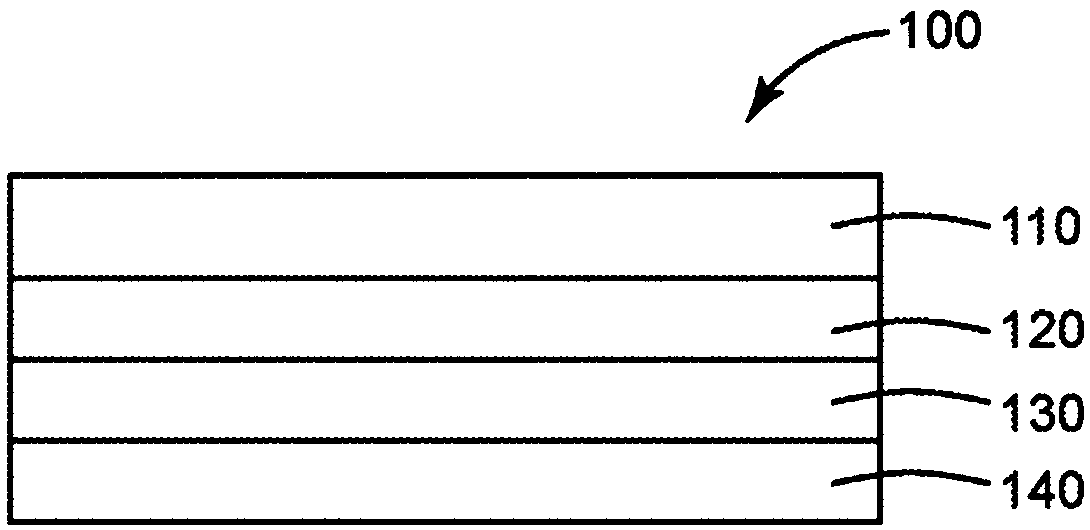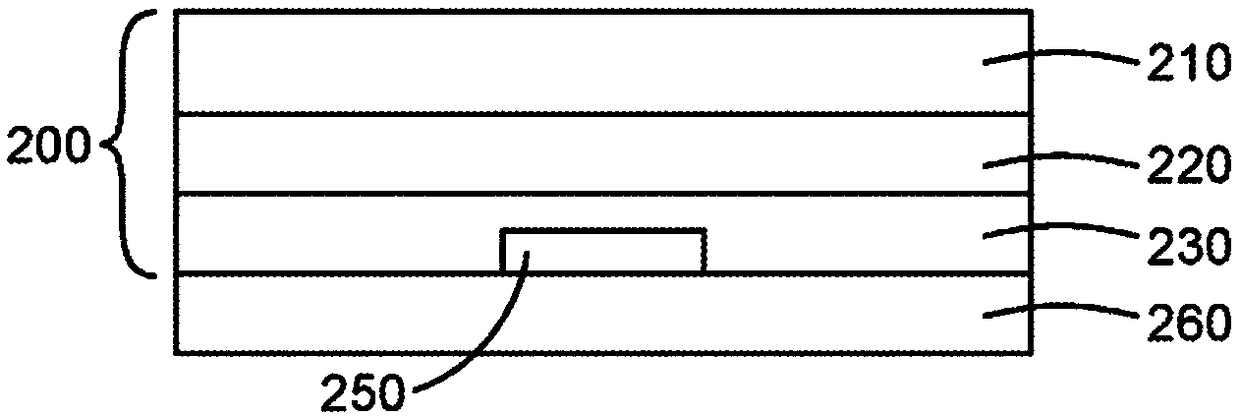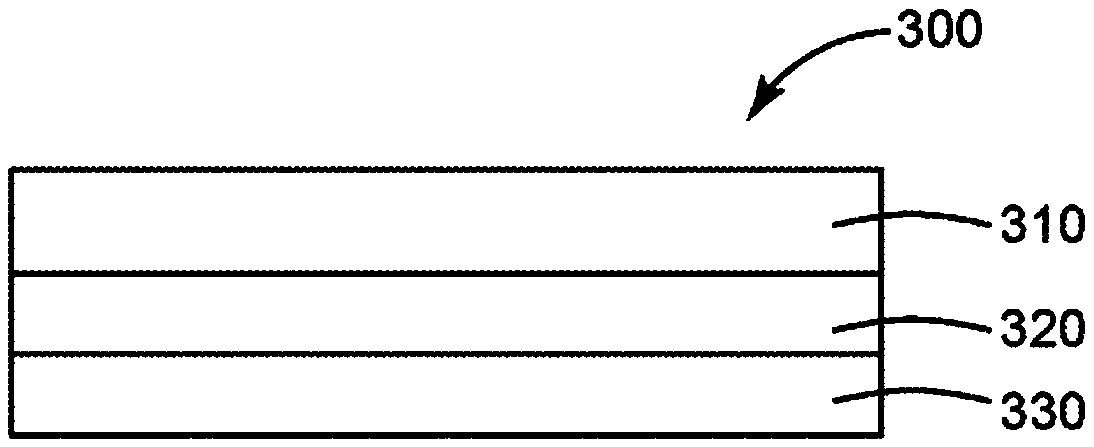Nanoparticle filled barrier adhesive compositions
A nanoparticle and composition technology, which is applied in the direction of film/flaky adhesives, non-polymer adhesive additives, adhesives, etc., can solve the problem of damage to the flexibility of devices, and achieve the effect of improving barrier properties
- Summary
- Abstract
- Description
- Claims
- Application Information
AI Technical Summary
Problems solved by technology
Method used
Image
Examples
Embodiment
[0073] The following examples further explain the purpose and beneficial effects of the present invention, but the specific materials and amounts listed in these examples, as well as other conditions and details, should not be construed as improper limitations of the present invention. All parts, percentages and ratios mentioned in the following examples are by weight unless otherwise indicated. Unless otherwise indicated, reagents were purchased from Sigma Aldrich Company, St. Louis, MO.
[0074] Table 1: Materials and sources .
[0075]
[0076]
[0077] Optical Properties
[0078] Transmission, clarity and haze data were obtained using BYK Gardner Haze-Gard Plus (BYK-Gardner USA, Inc., Columbia, MD).
[0079] Moisture barrier test
[0080] The ability of the barrier assembly to prevent moisture or water vapor transport was tested by laminating the barrier assembly to glass deposited with elemental calcium to create test specimens. These samples were then exp...
preparation example 1
[0089] Preparation Example 1: Polyisobutylene-Based Adhesive Mixture
[0090] The bulk Oppanol B80 and Oppanol B50SF polyisobutylene polymer resins were cut into approximately 1 inch (2.5 cm) cubes. Weighed cubes of these resins were then mixed with Escorez 5300 tackifier in toluene in capped glass jars. The weight ratio of the binder mixture was two parts Oppanol B80, one part Oppanol B50SF, and one part Escorez 5300 in sufficient toluene to provide a 25% by weight solution. The resulting formulation was mixed for 2 weeks using a roller mixer until the solution was homogeneous.
preparation example 2-4
[0091] Preparation Example 2-4: Nanoparticle Dispersion
[0092] The nanoparticles were calcium oxide nanopowder (CaO) and Claytone APA ("clay") added to toluene at the weight ratios provided in Table 2. Nanoparticles were added directly to toluene at 5% solids by weight and then used a Sonics VibraCell VCX750 Sonicator (Sonics & Materials Inc., Newtown, CT) at 18%-20% amplitude Disperse for 20 minutes.
[0093] Table 2: Ratio of nanoparticles in the dispersions used in this work .
[0094]
PUM
 Login to View More
Login to View More Abstract
Description
Claims
Application Information
 Login to View More
Login to View More - Generate Ideas
- Intellectual Property
- Life Sciences
- Materials
- Tech Scout
- Unparalleled Data Quality
- Higher Quality Content
- 60% Fewer Hallucinations
Browse by: Latest US Patents, China's latest patents, Technical Efficacy Thesaurus, Application Domain, Technology Topic, Popular Technical Reports.
© 2025 PatSnap. All rights reserved.Legal|Privacy policy|Modern Slavery Act Transparency Statement|Sitemap|About US| Contact US: help@patsnap.com



